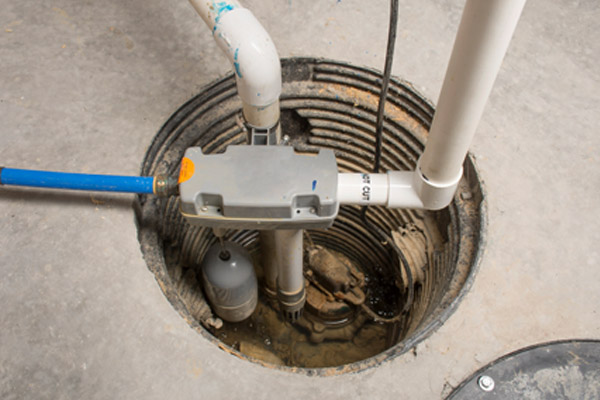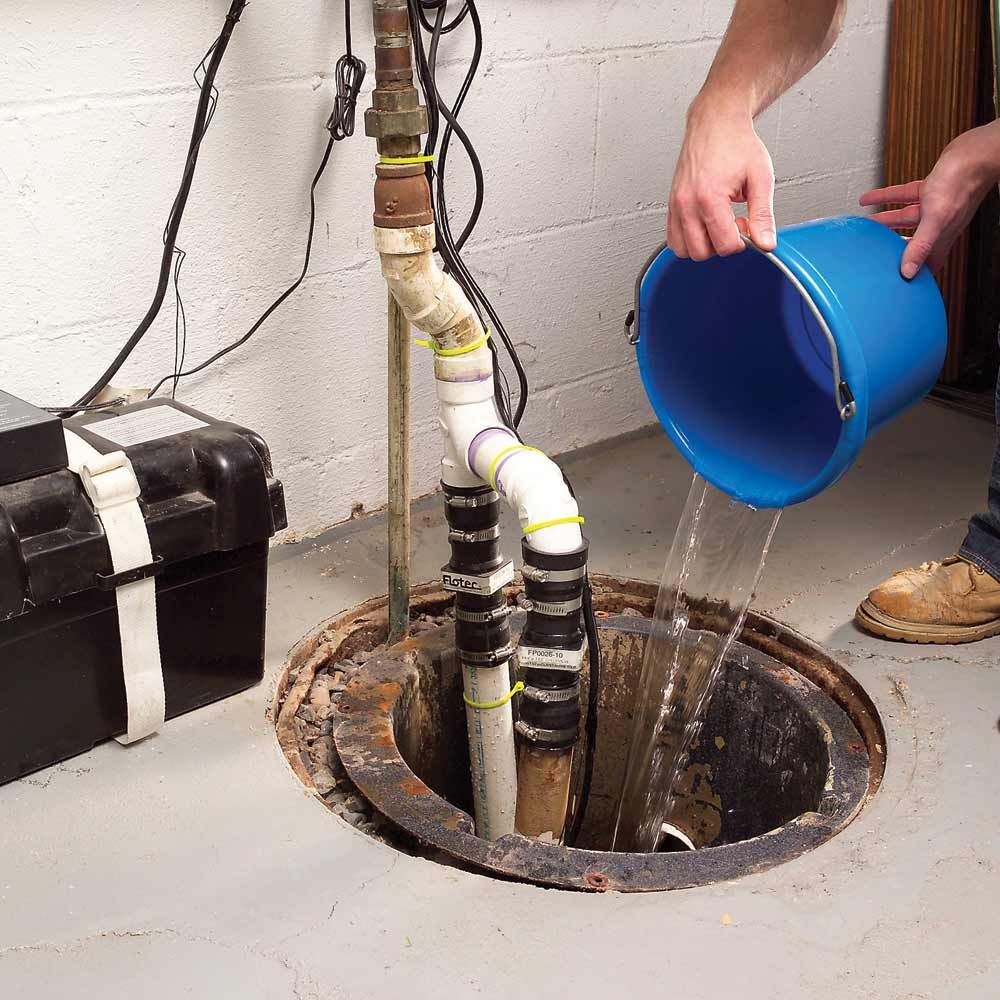Your Comprehensive Guide to Servicing a Sump Pump
Your Comprehensive Guide to Servicing a Sump Pump
Blog Article
This great article down below relating to Steps to Cleaning Your Sump Pump Properly is immensely stimulating. Check it out for your own benefit and see what you think about it.

Sump pumps are crucial elements in several homes, especially in areas prone to flooding or excessive moisture. They help prevent water damage by effectively removing excess water from basements or crawl spaces. However, like any other appliance, sump pumps require normal maintenance to guarantee they operate effectively when needed the most. Cleansing your sump pump is a vital part of its upkeep, and understanding exactly how to do it appropriately can save you from costly repair work and possible disasters.
Introduction
Preserving a clean sump pump is crucial for its correct performance and longevity. Disregarding this necessary job can result in blockages, malfunctions, and ultimately, water damage to your residential property. Therefore, finding out how to clean up a sump pump is crucial for homeowners that rely on these tools to keep their basements dry and safeguarded.
Indications of a Dirty Sump Pump
Knowing when your sump pump needs cleansing is vital for stopping possible breakdowns. Some common signs that suggest a filthy sump pump include odd noises during procedure, decreased water flow, and noticeable debris in the pit. If you observe any of these symptoms, it's necessary to clean your sump pump promptly to avoid any type of additional issues.
Getting ready for Cleaning
Prior to you start cleaning your sump pump, it's important to take some security preventative measures. Begin by shutting down the power to the pump to avoid any kind of electrical mishaps. In addition, wear ideal safety gear, such as gloves and goggles, to shield on your own from dust, debris, and possible virus.
Understanding the Sump Pump
Prior to diving into the cleaning procedure, it's necessary to have a fundamental understanding of how a sump pump functions. Commonly installed in a pit or container below the cellar flooring, a sump pump includes several vital parts, including a pump, a float button, and a discharge pipeline. When water builds up in the pit, the float button triggers the pump, which after that pumps the water out through the discharge pipe, far from the building's foundation.
Detailed Overview to Cleaning a Sump Pump
Turning off the Power
Begin by disconnecting the power supply to the sump pump to avoid any kind of mishaps while cleaning.
Checking for Correct Performance
Prior to re-installing the pump, perform a quick examination to make certain that the float switch activates the pump properly. Put some water right into the sump pit and observe the pump's procedure. If whatever is operating appropriately, you can reconstruct the pump and reconnect the power supply.
Removing Debris and Dust
Use a container or a scoop to remove any noticeable debris, dust, or sediment from the sump pit. Dispose of the debris properly to stop it from obstructing the pump or the discharge pipeline.
Cleansing the Pump and Float Change
Once the pit is free from particles, carefully get rid of the pump from the pit. Check the pump and the float switch for any indications of damages or wear. Use a soft brush or towel to clean the surface areas and eliminate any type of collected grime.
Flushing the System
After cleansing the pump and float button, flush the sump pit with tidy water to eliminate any type of continuing to be dust or sediment. This will certainly aid guarantee that the pump runs efficiently and effectively.
Maintenance Tips to Keep Your Sump Pump Clean
In addition to routine cleaning, there are several upkeep ideas you can comply with to maintain your sump pump in optimal condition:
Final thought
Cleaning your sump pump is a critical aspect of its maintenance and makes sure that it runs properly when you need it the most. By following the steps detailed in this guide and integrating routine upkeep right into your routine, you can prolong the life expectancy of your sump pump and protect your home from water damages.
6 STEPS ON HOW TO CLEAN A SUMP PUMP PROPERLY
UNDERSTANDING SUMP PUMPS
Your sump pump plays a crucial role in protecting your home by managing and removing excess water. It primarily functions as a “shield”, guarding your basement against the damaging effects of water accumulation. The pump is housed in a sump pit in the lowest part of your basement, and its job is to pump out any water that collects there.
During heavy rainfalls or when snow melts rapidly, water can infiltrate your basement, posing potential risks like flooding, structural damage, and harmful mold growth. Here, the sump pump springs into action, pumping out the intruding water and directing it away from your home.
SAFETY FIRST
Before cleaning, remember to prioritize safety. Disconnect the sump pump from the power source to prevent any accidental electric shocks. Also, wear sturdy gloves to protect your hands from any sharp or dirty components within the pump.
REMOVE THE SUMP PUMP
After ensuring your safety, the next step is to remove the sump pump from its pit. Doing this might require careful maneuvering as you don’t want to damage any pump components. Once removed, clean the sump pit to remove any accumulated debris or sludge.
INSPECT THE PUMP
Inspect the pump for any visible signs of wear or damage. Check the power cord, float switch, and impeller housing. If any components look worn out or damaged, consider replacing them to ensure optimal performance.
CLEAN THE PUMP
Thoroughly clean the pump with warm, soapy water. Make sure to rid it of any dirt, gravel, or other debris that might impede its performance. You can use a toothbrush to clean the small, hard-to-reach parts of the pump.
REINSTALL THE SUMP PUMP
Reinstall the pump into the sump pit Make sure it’s positioned correctly to remove the water effectively Once it’s back in place, reconnect it to the power source TEST THE PUMP
Finally, pour some water into the pit to ensure the pump works correctly. It should start automatically and begin pumping out the water; if it doesn’t, check the power source and the positioning of the pump.
Remember, while cleaning your sump pump is an essential part of home maintenance, hiring a professional plumber for a thorough inspection and cleaning at least once a year is also important. This will ensure that your pump is in optimal condition, ready to protect your home from potential water damage.
BEST PRACTICES FOR CLEANING SUMP PUMP DISCHARGE PIPES
Regular Inspection: Regularly inspect your discharge pipes, especially during heavy rainfall or snowmelt periods. Look for any signs of blockage or damage. Early detection of problems can prevent serious issues down the line. Periodic Cleaning: Over time, sediment and debris can accumulate in the discharge pipes, impeding the flow of water. Regular cleaning helps keep the pipes clear and functioning efficiently. You can use a high-pressure water jet to effectively clean the pipes. Insulation During Winter: In colder climates, discharge pipes can freeze, blocking the outflow of water. Protect your discharge pipes from freezing temperatures by insulating them with foam pipe insulation. This will ensure the sump pump can continue to discharge water even in freezing conditions. Proper Positioning: The discharge pipe should be positioned to direct water away from your home’s foundation. Improper positioning can lead to water seeping back into the basement. Ensure the pipe is long enough and angled correctly. Installation of a Check Valve: A check valve prevents water from flowing back into your sump pit after the pump has pushed it out. Installing a check valve helps maintain the efficiency of your sump pump and reduces the risk of flooding. Minimize Pipe Turns: Every curve or turn in the discharge pipe can decrease the efficiency of water flow. By minimizing turns and bends in your discharge pipe, you can increase the efficiency of your sump pump. https://www.fullspeedplumbing.com/how-to-clean-a-sump-pump-properly9999/

Do you like reading about How To Effectively Clean A Sump Pump? Place a review down the page. We will be happy to see your feelings about this blog post. Hoping that you come back again soon. Those who appreciated our page please do not forget to share it. Thank you for being here. Revisit us soon.
Book Your Installation Report this page